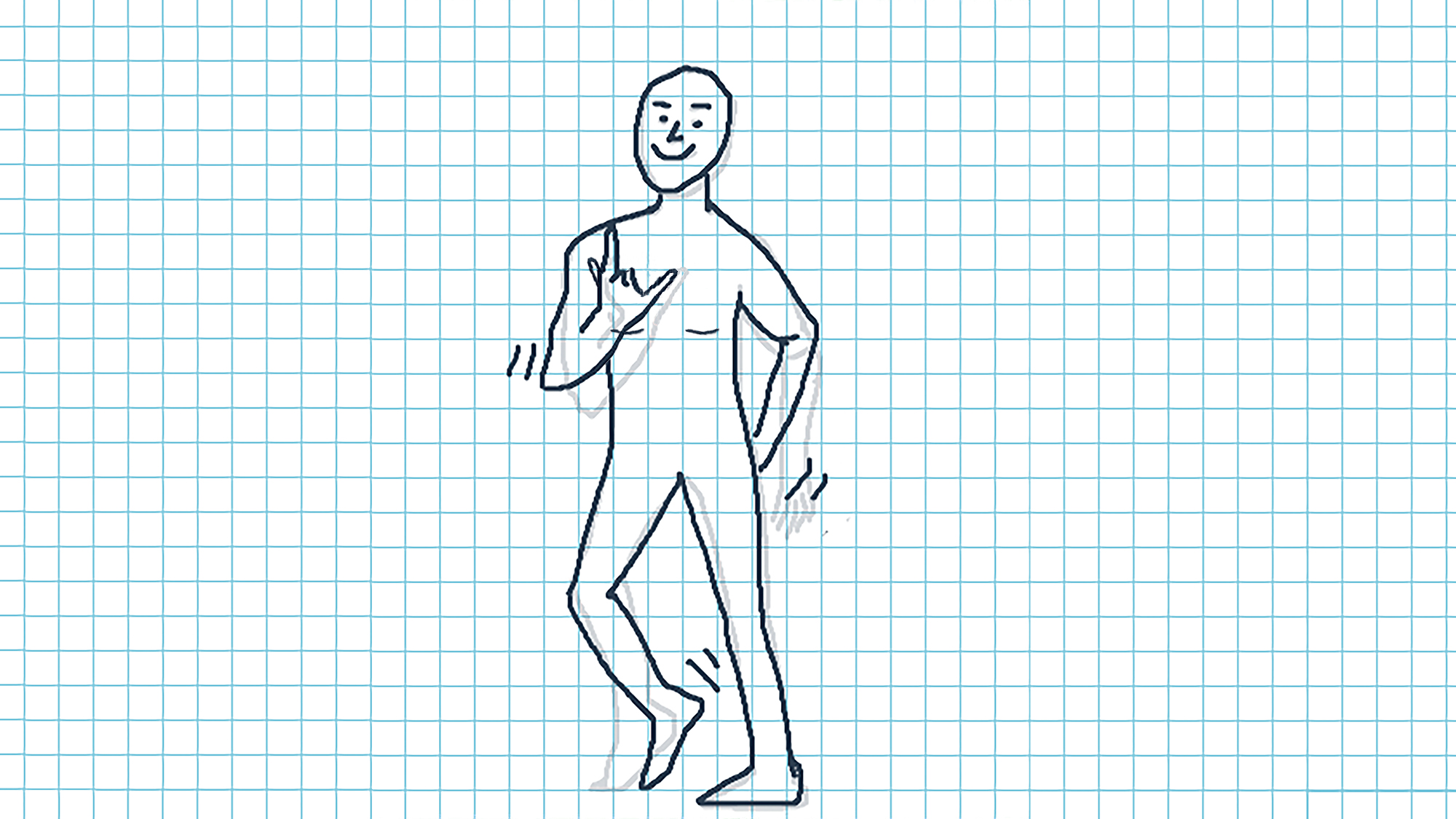
In Motion
In Motioneverything is moving
In Motion – everything is moving series of sessions aims at depicting movement through drawing and then creating a digital animation, a GIF, of a person dancing. Thereby, fine motor skills, artistic imagination, drawing from observation, and working with digital media are encouraged. The tasks refer to representations of movement in Keith Haring’s work on the one hand and that in comics (according to Scott McCloud’s “Reading Comics Correctly,” 2001) on the other. Along with Haring’s dynamic representations, the artist’s activist background and its context in the AIDS movement are addressed. The sessions could be taught in an interdisciplinary way (with biology classes) and possibly combined with a project on sexuality and safer sex.
Description
This project relates to Keith Haring’s representations of movement and addresses art in public spaces (graffiti, murals, etc.). Haring (1958-1990) was an American artist and pioneer of street art in New York. With his bold, dynamic drawings in public spaces, he advocated for the LGBTQIA+ community and was part of the AIDS movement. He contracted AIDS himself and died in 1990 at the age of 31. His works are part of various art collections and some can still be seen in their original locations, yet, as special editions, some also adorn various everyday objects, cosmetics and fashion items.
In the light of Haring’s work, comics are discussed to see how movement can be represented within the medium of drawing. For this purpose, excerpts from Scott McCloud’s “Reading Comics Correctly” (2001) are studied.
Based on Haring’s drawings and the depictions of movement in comics, students themselves create drawings of movement, analog at first and then digitally using FlipAnim. Students use their smartphones daily, consume GIFs and share them with others. This assignment reaches directly into their everyday world by teaching them how to create a GIF from their own drawing. They gain their first experience with different digital drawing tools. In addition, they learn to continue working digitally using analog sketches or drawings. This series of sessions also has the potential of becoming part of a larger, interdisciplinary project involving other subjects that spans over 1–2 weeks. Biology classes, for example, cover sexuality and STDs; History classes address the AIDS pandemic and related activism historically; and the topic of movement can additionally be incorporated in both the physics and physical education classes. One should also consider inviting external sex educators and lecturers with expertise in the subject of safer internet.
Tasks and specific work steps
- Part 1:
In the introductory unit, works by Keith Haring as well as excerpts of comic book drawings (McCloud 2001, Chapters 3 and 4) are analyzed in which movements are drawn in various ways. Haring’s social activism and role in the AIDS movement will also be discussed. This is accompanied by a screening of the video “Flick Flack: Keith Haring’s Toilet Work,” which lasts just under five minutes.
After that, the YouTube clip “ImPulsTanz Workshops 2021” is shown, and the students are asked to make sketches of the dancers’ movements shown in the clip. For this purpose, the video is paused. After the first round of practice, the results are reviewed and the students’ different strategies are discussed. Further rounds of this exercise take place as needed or desired. This unit aims at encouraging precise perception and reproduction, as well as introducing students to drawing movements, bringing dynamics into drawing, and familiarizing them with the artist Keith Haring.
Duration: around 100 minutes
- Part 2:
Students work with dance or movement videos of their own choice. Equipped with a sketchpad and pencils, they are asked to document the movement of the person(s) in the video through drawing (e.g.: person waving). Students learn how to draw based on observation. The drawings are reviewed together at the beginning of the next double lesson and the strategies used are discussed.
Duration: around 100 minutes
- Part 3:
In the following lessons, the students work with the animation app FlipAnim. They learn about digital drawing and gain initial experience with an animation program. The aim is to transform the analog sketch from the previous unit into a digital animation of the motion sequence. Finally, the finished animations can be uploaded to FlipAnim as well as downloaded as GIFs. The school website could be a possible “exhibition space” for the finished GIFs.
Duration: around 200 minutes
Sources and References
- Keith Haring and depictions of movement in comics:
https://www.youtube.com/watch?v=W04j0Je01wQ&feature=emb_imp_woyt&ab_channel=CBSSundayMorning - Biography:
http://www.artnet.com/artists/keith-haring/ - Short video clip about Haring’s toilet piece:
https://www.arte.tv/de/videos/086962-037-A/flick-flack/ - Scott McCloud, „Understanding Comics – The Invisible Art“ (2001)
- Video ImPulsTanz Workshops 2021, very good for studying movements:
https://www.youtube.com/watch?v=g0EZeJRoTpw
Images/Examples

In Motion – alles bewegt sich © 2022 by Rebecca Viola Lobe is licensed under CC BY-SA 4.0
Additional Information
Author’s Encouragement
Various fields (analog drawing, digital work, and interdisciplinary teaching) are covered, which brings a change of pace to the everyday teaching routine. In addition, the students learn about historical positions in public art, awareness of the activist character of graffiti is raised.